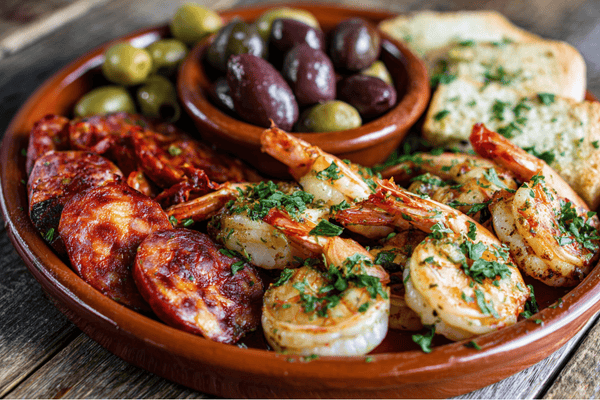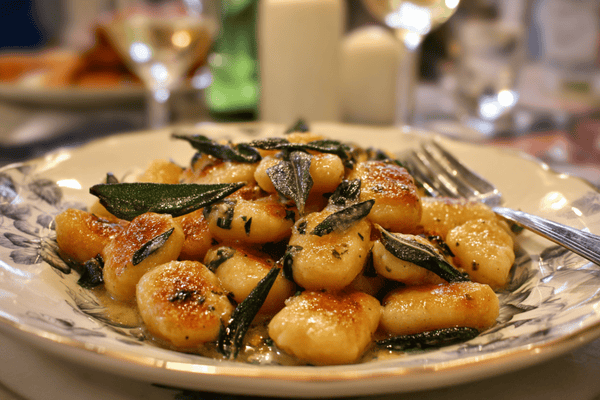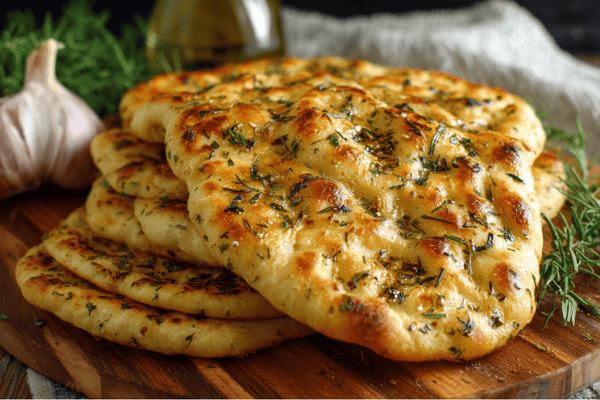
Chefs' knives are usually high-quality knives (particularly Japanese chef's knives) and most will have a smooth and almost elegant-looking blade. There is however an exception that you might have come across when researching or browsing knife collections and that is when a chef's knife has dimples on the side of the blade.
Chefs' knives have dimples on the side of the blade as this allows for a smoother cut and helps to prevent food from sticking to the blade (particularly when cutting meat). These dimples or Grantons form air pockets that minimize suction and stop foods that are quite moist like meat and vegetables from sticking to the knife.
Dimples might seem out of place on a chef’s knife and you’ll find that not every chef or cooking enthusiast chooses to use them and if they make cutting easier then why are they not the standard when it comes to manufacturing the knives?
In this article, we will run through why certain chefs' knives have dimples, what the advantages are, and how they compare against a smooth-bladed variant.
Table of contents
What Is the Purpose of Dimples on a Knife

The main purpose of dimples on a knife is to create air pockets that reduce suction when cutting large or particularly juicy food types. This would include large meats, potatoes, and other vegetables that hold a lot of moisture.
These dimples also referred to as a Granton edge, are oval and shallow indents on the side of the knife that is located close to the cutting edge of the blade. They will typically span the length of the blade along the edge and will be found on both sides of the blade.
These dimples are excellent when carving or working with large and moist foods as the air pockets reduce friction and allow the knife to pass through food cleanly, evenly and with minimized sticking to the blade.
Why Do Chefs Knives Have Dimples?

Chefs knives are multi-purpose and all-around knives that are designed to perform with a variety of food types. Meat, fish, vegetable, fruit, and even bread/dairy can all be cut using a standard chef’s knife and it’s this multi-purpose use that lends itself well to utilizing dimples on the blade.
This simple addition to a chef’s knife will allow for easier and cleaner cuts when working with moist food and as chefs' knives are used to cut both meat and vegetables, the end result is a cleaner and easier cut which is crucial when you are not working with specialist knives.
What Are the Advantages of Dimples on a Chefs Knife
The main advantage of using a chef's knife with dimples is that moist food will not stick to the knife during use and the reduced drag and friction as the knife passes through food will result in a cleaner cut.This sounds very impressive however a high-quality and sharp knife will already produce precise and clean cuts so we are not saying that the addition of dimples suddenly makes this a superior knife. The benefit, on the whole, is marginal and would only really be noticed and appreciated by professional chefs or those with significant cooking experience.
The advantages, however small, are still very much justified and are most evident when cutting large pieces of meat. The reduced friction as the knife passes through the meat allows for even separation and a cleaner cut.
This benefit can also be applied to cutting moist vegetables where you need a clean and even cut for decorative purposes and is one of the key reasons why this technique has become increasingly popular with Japanese-style knives where presentation is a key component of Japanese cuisine.
Dimples vs Smooth Blade
When it comes to a chef’s knife with or without dimples, the only real differing factor will be user preference. There are no significant differences between the use of either style and the only stand-out benefit of using a knife with dimples is if you need a clean cut when cutting large meats or vegetables.The difference is very slight, however, it is noticeable when cutting on these food types, a chef’s knife with dimples will reduce drag and provide a cleaner cut so if you had a choice of the two styles, we’d almost always say it’s worth going with the knife with dimples for a marginally better cut.
One issue you might see people reference in relation to a knife with dimples is whether the life cycle of the knife will be shortened once you sharpen it as a result of the dimples being close to the edge.
This is not a disadvantage of a chef's knife with dimples and should be of no concern to a potential buyer as sharpening your knife will only remove a minimal layer of steel on the knife’s edge and you will likely never sharpen your knife so much that it reduces the edge so drastically.
A Granton edge is completely different from a serrated edge and sharpening a knife with dimples will have no effect on the life span of these style knives.
The only legitimate thing that you should consider when deciding between a chef's knife with dimples or a smooth blade is what you will be cutting on a regular basis. This is because a blade with dimples will be slightly thicker in order to accommodate the dimples being hollowed out.
If you cut meat and vegetables regularly then the Granton edge will be preferable however if you need the sharpest and thinnest knife possible for ultra-fine cuts then this is the only occasion when we would recommend a smooth blade as a more obvious choice.
What to Look for When Buying a Chef's Knife With Dimples

As we’ve covered the function of dimples or Grantons on a chef’s knife, there are still some important factors to consider when buying a knife of this type as you need the dimples to be functional and not decorative!
Firstly, the dimples need to be located close to the knife's edge in order to be effective and reduce drag or suction when cutting. We’ve seen knives that feature dimples in the middle of the blade and some that are even close to the spine and these are unfortunately not going to be effective during use.
These dimples need to be close to the edge of the knife in order to be utilized during a cut and if they are placed high up the blade then they will not be effective and will simply be a decorative addition, in which case you might as well purchase a smooth blade.
Secondly, look for knives that have the dimples asymmetrical or alternating on either side of the blade. This will ensure that the dimples are placed against solid steel on the opposite side of the blade which will increase the strength of the knife.
Blades with dimples that are symmetrically placed on either side will mean that they are connected by a thin piece of steel which will make these knives structurally weaker.
Closing Points
The dimples on a knife were formerly patented in the UK as a Granton knife range, however, knife manufacturers worldwide have now been able to utilize this technique, and hollowed-out dimples have become a more common sight.The Santoku knife, in particular, has utilized this blade style more in recent years as well as larger cleaving knives and we see no reason why this style of blade will not continue to grow over the next few years.
While there are no major differences between this and a smooth blade, the reduced drag and cleaner cut when working with meat and other moist foods is definitely noticeable and if you are deciding between a chef’s knife with dimples or a smooth blade, the dimple option could actually be the best.


